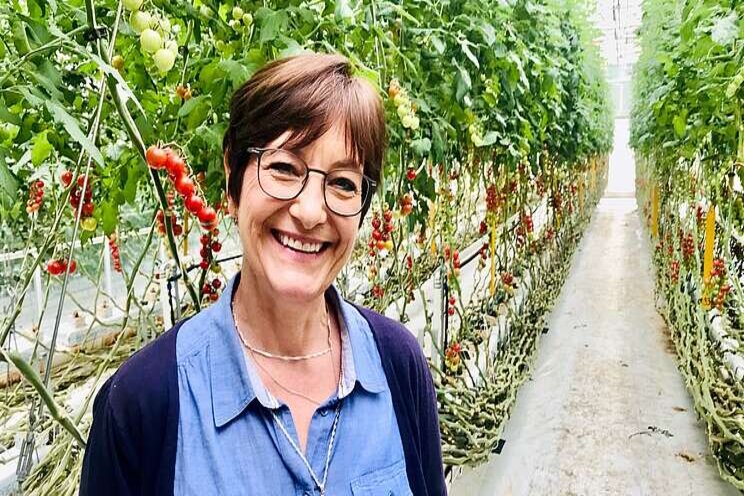A big change is happening in plant stress management
Added on 17 February 2021

Interview with Carrol Plummer, CEO and Co-Founder of Vivent.

"At Vivent, we specialise in biosignals analysis", says Carrol. "All plants use internal electrical, mechanical and chemical signalling networks to coordinate growth, reproduction and defence - and we are excited to be the first company in the world to launch a commercial crop health diagnostic system based on plant electrophysiology".
Tell us a bit about the diagnostic system.
It's called PhytlSigns and it's a system for real-time diagnosis of crop health. The greenhouse growers we've spoken to are keen to use the sensor to see how their plants are responding in real time to climate changes, fertigation, pests and fungal infections.
So how exactly does it work?
We measure small electrical signals emitted by plant cells to, control growth, mount defenses and adapt to environmental changes. These signals are analysed using machine learning. We then use machine learning models to track either general or specific plant stressors in real time.
There is still a lot to learn in this area but right now growers can monitor some common greenhouse stressors like drought, spider mites or nutrient deficits with the system, getting an instant alert of problems. Breeders can use the system to tell if one plant variety is more prone to stress than another and agrochem companies can see how plants are responding to both stressors, like nematodes, and to treatments, including plant defense inducers or other biologicals.

How long has this technology been around?
Electrical signals in plants have been measured for over 100 years, starting with an Indian scientist called Jagdish Chandra Bose, but interpreting the signals is difficult because they are very complex. Signals can emanate from many parts of the plant and they overlap in time and space. We had a real breakthrough when we started applying machine learning to the signals. Now we can differentiate a number of different stressors and can diagnose problems days before visual symptoms appear.
A really great aspect of measuring plant electrophysiology is that we see the impact of nearly every kind of stressor to which a plant reacts. It is a very comprehensive solution for understanding plant physiology.
What's next for Vivent?
We are just starting to sell crop monitoring services in key markets so the first step is make some early sales, deliver value for our clients and then refine our solution so that it provides advice on optimising growing conditions and early warning of many different types of crop stress for growers and speeds up trait analysis for breeders. We already work with agrochemical companies to speed up product development or assess product efficacy. Feedback from early users will be key to ensuring that our solution is easy to use and integrates with other platforms growers use to manage their operations. We will be integrating plant electrophysiology into greenhouse control systems like nutrigation and climate management. The plants can turn irrigation pumps on themselves when they need more water but the growers will be able to set limits for the plant stress to ensure their produce is really tasty.
Many growers and breeders are already enthusiastic about data driven growing and we are sure they will learn even more about their plants by seeing in real-time how their plants respond to environmental changes. Our ambition is to help growers improve their yields while reducing inputs like energy or water and to provide reliable and early alerts of crop stress so growers can choose environmentally preferable crop protection treatments. We've started in the horticulture sector but will expand to higher value outdoor crops like citrus and nut trees, olives and vines in due course and we will also launch a handheld sensor for field crop disease detection.
Source: Goedemorgen
More news















